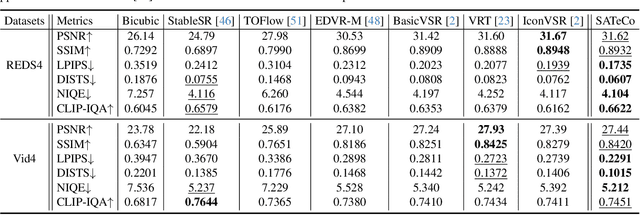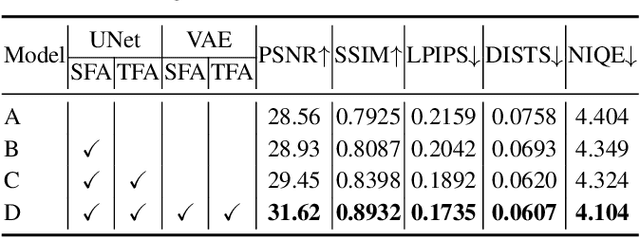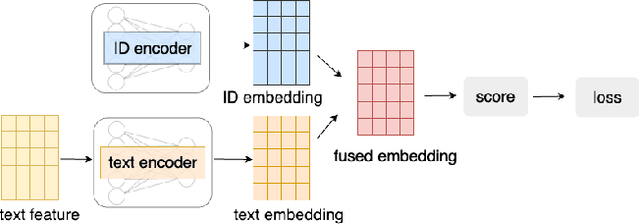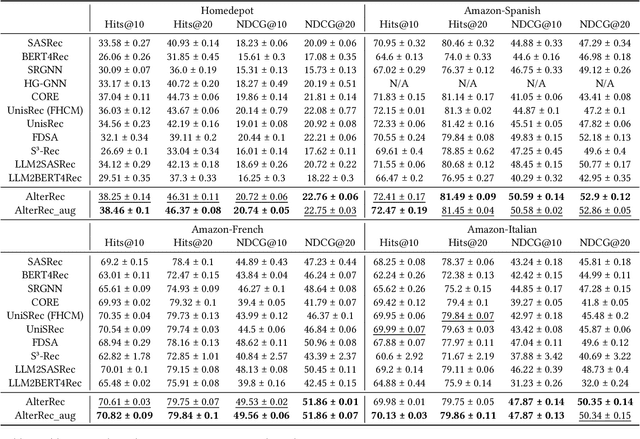Zhikai Chen
Unveiling Mode Connectivity in Graph Neural Networks
Feb 18, 2025Abstract:A fundamental challenge in understanding graph neural networks (GNNs) lies in characterizing their optimization dynamics and loss landscape geometry, critical for improving interpretability and robustness. While mode connectivity, a lens for analyzing geometric properties of loss landscapes has proven insightful for other deep learning architectures, its implications for GNNs remain unexplored. This work presents the first investigation of mode connectivity in GNNs. We uncover that GNNs exhibit distinct non-linear mode connectivity, diverging from patterns observed in fully-connected networks or CNNs. Crucially, we demonstrate that graph structure, rather than model architecture, dominates this behavior, with graph properties like homophily correlating with mode connectivity patterns. We further establish a link between mode connectivity and generalization, proposing a generalization bound based on loss barriers and revealing its utility as a diagnostic tool. Our findings further bridge theoretical insights with practical implications: they rationalize domain alignment strategies in graph learning and provide a foundation for refining GNN training paradigms.
AutoG: Towards automatic graph construction from tabular data
Jan 25, 2025



Abstract:Recent years have witnessed significant advancements in graph machine learning (GML), with its applications spanning numerous domains. However, the focus of GML has predominantly been on developing powerful models, often overlooking a crucial initial step: constructing suitable graphs from common data formats, such as tabular data. This construction process is fundamental to applying graphbased models, yet it remains largely understudied and lacks formalization. Our research aims to address this gap by formalizing the graph construction problem and proposing an effective solution. We identify two critical challenges to achieve this goal: 1. The absence of dedicated datasets to formalize and evaluate the effectiveness of graph construction methods, and 2. Existing automatic construction methods can only be applied to some specific cases, while tedious human engineering is required to generate high-quality graphs. To tackle these challenges, we present a two-fold contribution. First, we introduce a set of datasets to formalize and evaluate graph construction methods. Second, we propose an LLM-based solution, AutoG, automatically generating high-quality graph schemas without human intervention. The experimental results demonstrate that the quality of constructed graphs is critical to downstream task performance, and AutoG can generate high-quality graphs that rival those produced by human experts.
One Model for One Graph: A New Perspective for Pretraining with Cross-domain Graphs
Nov 30, 2024



Abstract:Graph Neural Networks (GNNs) have emerged as a powerful tool to capture intricate network patterns, achieving success across different domains. However, existing GNNs require careful domain-specific architecture designs and training from scratch on each dataset, leading to an expertise-intensive process with difficulty in generalizing across graphs from different domains. Therefore, it can be hard for practitioners to infer which GNN model can generalize well to graphs from their domains. To address this challenge, we propose a novel cross-domain pretraining framework, "one model for one graph," which overcomes the limitations of previous approaches that failed to use a single GNN to capture diverse graph patterns across domains with significant gaps. Specifically, we pretrain a bank of expert models, with each one corresponding to a specific dataset. When inferring to a new graph, gating functions choose a subset of experts to effectively integrate prior model knowledge while avoiding negative transfer. Extensive experiments consistently demonstrate the superiority of our proposed method on both link prediction and node classification tasks.
Improving Causal Reasoning in Large Language Models: A Survey
Oct 22, 2024



Abstract:Causal reasoning (CR) is a crucial aspect of intelligence, essential for problem-solving, decision-making, and understanding the world. While large language models (LLMs) can generate rationales for their outputs, their ability to reliably perform causal reasoning remains uncertain, often falling short in tasks requiring a deep understanding of causality. In this survey, we provide a comprehensive review of research aimed at enhancing LLMs for causal reasoning. We categorize existing methods based on the role of LLMs: either as reasoning engines or as helpers providing knowledge or data to traditional CR methods, followed by a detailed discussion of the methodologies in each category. We then evaluate the performance of LLMs on various causal reasoning tasks, providing key findings and in-depth analysis. Finally, we provide insights from current studies and highlight promising directions for future research. We aim for this work to serve as a comprehensive resource, fostering further advancements in causal reasoning with LLMs. Resources are available at https://github.com/chendl02/Awesome-LLM-causal-reasoning.
Learning on Graphs with Large Language Models(LLMs): A Deep Dive into Model Robustness
Jul 16, 2024



Abstract:Large Language Models (LLMs) have demonstrated remarkable performance across various natural language processing tasks. Recently, several LLMs-based pipelines have been developed to enhance learning on graphs with text attributes, showcasing promising performance. However, graphs are well-known to be susceptible to adversarial attacks and it remains unclear whether LLMs exhibit robustness in learning on graphs. To address this gap, our work aims to explore the potential of LLMs in the context of adversarial attacks on graphs. Specifically, we investigate the robustness against graph structural and textual perturbations in terms of two dimensions: LLMs-as-Enhancers and LLMs-as-Predictors. Through extensive experiments, we find that, compared to shallow models, both LLMs-as-Enhancers and LLMs-as-Predictors offer superior robustness against structural and textual attacks.Based on these findings, we carried out additional analyses to investigate the underlying causes. Furthermore, we have made our benchmark library openly available to facilitate quick and fair evaluations, and to encourage ongoing innovative research in this field.
A Pure Transformer Pretraining Framework on Text-attributed Graphs
Jun 19, 2024



Abstract:Pretraining plays a pivotal role in acquiring generalized knowledge from large-scale data, achieving remarkable successes as evidenced by large models in CV and NLP. However, progress in the graph domain remains limited due to fundamental challenges such as feature heterogeneity and structural heterogeneity. Recently, increasing efforts have been made to enhance node feature quality with Large Language Models (LLMs) on text-attributed graphs (TAGs), demonstrating superiority to traditional bag-of-words or word2vec techniques. These high-quality node features reduce the previously critical role of graph structure, resulting in a modest performance gap between Graph Neural Networks (GNNs) and structure-agnostic Multi-Layer Perceptrons (MLPs). Motivated by this, we introduce a feature-centric pretraining perspective by treating graph structure as a prior and leveraging the rich, unified feature space to learn refined interaction patterns that generalizes across graphs. Our framework, Graph Sequence Pretraining with Transformer (GSPT), samples node contexts through random walks and employs masked feature reconstruction to capture pairwise proximity in the LLM-unified feature space using a standard Transformer. By utilizing unified text representations rather than varying structures, our framework achieves significantly better transferability among graphs within the same domain. GSPT can be easily adapted to both node classification and link prediction, demonstrating promising empirical success on various datasets.
Text-space Graph Foundation Models: Comprehensive Benchmarks and New Insights
Jun 15, 2024



Abstract:Given the ubiquity of graph data and its applications in diverse domains, building a Graph Foundation Model (GFM) that can work well across different graphs and tasks with a unified backbone has recently garnered significant interests. A major obstacle to achieving this goal stems from the fact that graphs from different domains often exhibit diverse node features. Inspired by multi-modal models that align different modalities with natural language, the text has recently been adopted to provide a unified feature space for diverse graphs. Despite the great potential of these text-space GFMs, current research in this field is hampered by two problems. First, the absence of a comprehensive benchmark with unified problem settings hinders a clear understanding of the comparative effectiveness and practical value of different text-space GFMs. Second, there is a lack of sufficient datasets to thoroughly explore the methods' full potential and verify their effectiveness across diverse settings. To address these issues, we conduct a comprehensive benchmark providing novel text-space datasets and comprehensive evaluation under unified problem settings. Empirical results provide new insights and inspire future research directions. Our code and data are publicly available from \url{https://github.com/CurryTang/TSGFM}.
Graph Machine Learning in the Era of Large Language Models
Apr 23, 2024Abstract:Graphs play an important role in representing complex relationships in various domains like social networks, knowledge graphs, and molecular discovery. With the advent of deep learning, Graph Neural Networks (GNNs) have emerged as a cornerstone in Graph Machine Learning (Graph ML), facilitating the representation and processing of graph structures. Recently, LLMs have demonstrated unprecedented capabilities in language tasks and are widely adopted in a variety of applications such as computer vision and recommender systems. This remarkable success has also attracted interest in applying LLMs to the graph domain. Increasing efforts have been made to explore the potential of LLMs in advancing Graph ML's generalization, transferability, and few-shot learning ability. Meanwhile, graphs, especially knowledge graphs, are rich in reliable factual knowledge, which can be utilized to enhance the reasoning capabilities of LLMs and potentially alleviate their limitations such as hallucinations and the lack of explainability. Given the rapid progress of this research direction, a systematic review summarizing the latest advancements for Graph ML in the era of LLMs is necessary to provide an in-depth understanding to researchers and practitioners. Therefore, in this survey, we first review the recent developments in Graph ML. We then explore how LLMs can be utilized to enhance the quality of graph features, alleviate the reliance on labeled data, and address challenges such as graph heterogeneity and out-of-distribution (OOD) generalization. Afterward, we delve into how graphs can enhance LLMs, highlighting their abilities to enhance LLM pre-training and inference. Furthermore, we investigate various applications and discuss the potential future directions in this promising field.
Learning Spatial Adaptation and Temporal Coherence in Diffusion Models for Video Super-Resolution
Mar 25, 2024



Abstract:Diffusion models are just at a tipping point for image super-resolution task. Nevertheless, it is not trivial to capitalize on diffusion models for video super-resolution which necessitates not only the preservation of visual appearance from low-resolution to high-resolution videos, but also the temporal consistency across video frames. In this paper, we propose a novel approach, pursuing Spatial Adaptation and Temporal Coherence (SATeCo), for video super-resolution. SATeCo pivots on learning spatial-temporal guidance from low-resolution videos to calibrate both latent-space high-resolution video denoising and pixel-space video reconstruction. Technically, SATeCo freezes all the parameters of the pre-trained UNet and VAE, and only optimizes two deliberately-designed spatial feature adaptation (SFA) and temporal feature alignment (TFA) modules, in the decoder of UNet and VAE. SFA modulates frame features via adaptively estimating affine parameters for each pixel, guaranteeing pixel-wise guidance for high-resolution frame synthesis. TFA delves into feature interaction within a 3D local window (tubelet) through self-attention, and executes cross-attention between tubelet and its low-resolution counterpart to guide temporal feature alignment. Extensive experiments conducted on the REDS4 and Vid4 datasets demonstrate the effectiveness of our approach.
Enhancing ID and Text Fusion via Alternative Training in Session-based Recommendation
Feb 14, 2024



Abstract:Session-based recommendation has gained increasing attention in recent years, with its aim to offer tailored suggestions based on users' historical behaviors within sessions. To advance this field, a variety of methods have been developed, with ID-based approaches typically demonstrating promising performance. However, these methods often face challenges with long-tail items and overlook other rich forms of information, notably valuable textual semantic information. To integrate text information, various methods have been introduced, mostly following a naive fusion framework. Surprisingly, we observe that fusing these two modalities does not consistently outperform the best single modality by following the naive fusion framework. Further investigation reveals an potential imbalance issue in naive fusion, where the ID dominates and text modality is undertrained. This suggests that the unexpected observation may stem from naive fusion's failure to effectively balance the two modalities, often over-relying on the stronger ID modality. This insight suggests that naive fusion might not be as effective in combining ID and text as previously expected. To address this, we propose a novel alternative training strategy AlterRec. It separates the training of ID and text, thereby avoiding the imbalance issue seen in naive fusion. Additionally, AlterRec designs a novel strategy to facilitate the interaction between the two modalities, enabling them to mutually learn from each other and integrate the text more effectively. Comprehensive experiments demonstrate the effectiveness of AlterRec in session-based recommendation. The implementation is available at https://github.com/Juanhui28/AlterRec.
 Add to Chrome
Add to Chrome Add to Firefox
Add to Firefox Add to Edge
Add to Edge